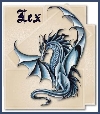
|
| Title: Wicca: A Guide for the Solitary Practitioner -by: Scott Cunningham | |
| TrueWitchcraft > General > Books | Go to subcategory: |
| Author | Content |
Charmed__X_3

|
|
|
Date Posted:01/13/2009 05:44 AMCopy HTML  Product Details
Editorial Reviews Amazon.com Wicca: A Guide for the Solitary Practitioner is the essential primer from one of the best known authors on Wicca. Focusing on the importance of individualism in your spiritual path, Cunningham explains the very basics of Sabbats (holy days), ceremonies, altars, and other nuts and bolts of Wicca that a solitary practitioner may have trouble finding elsewhere. While Wicca shouldn't be your sole point of reference when considering Wicca as your way of life, it is one of the best starting points. --Brian Patterson Book Description Cunninghams classic introduction to Wicca is about how to live life magically, spiritually, and wholly attuned with nature. It is a book of sense and common sense, not only about magick, but about religion and one of the most critical issues of today: how to achieve the much needed and wholesome relationship with our Earth. Cunningham presents Wicca as it is today: a gentle, Earth-oriented religion dedicated to the Goddess and God. Wicca also includes Scott Cunninghams own Book of Shadows and updated appendices of periodicals and occult suppliers. Spotlight Reviews Mr. Cunningham has written a book for the Wiccan who is solitary either because s/he knows no existing local compatible covens, or because s/he has no compatible person with whom to practice Wicca. The book is very well-written. It is suitable for true beginners, but contains extensive detail making it valuable for the more advanced Wiccan. Mr. Cunningham's Wiccan philosophy differs from other Wiccan authors. Other authors stress Wiccan history, Wicca's established rituals, coven membership benefits, and the apprenticeship required before Wiccan initiation. Mr. Cunningham's philosophy emphasizes attitude rather than organization. Specifically, Mr. Cunningham discusses specific Wiccan beliefs and goals: belief in the Goddess and God; concern for the Earth; social consciousness; and the right not to be dominated by others. He states that sincere living and supporting these Wiccan beliefs is more important than perfect performance of dogmatic rituals: "Ineffective ritual kills spirituality." This philosophy seems trivial, but it mirrors (British philosopher) Bertrand Russell's statements that ethics are more important than religious dogma. Mr. Cunningham's philosophy is very relevant to individuals who have fled the dogma of organized religions and who seek a more personal form of worship within Wicca. Mr. Cunningham's approach offers much flexibility. A sincere practitioner can perform their own Wiccan initiation or have no initiation. Brutal physical ordeals are not required within an initiation rite. An initiation rite uses spiritual tools (chanting, visualization, meditation, etc.) to achieve ritual states of consciousness. The book's first section discusses Wiccan Theory. This section discusses the Deities; Magick and Magickal Tools; Rituals, the Circle, and the Altar; the Days of Power (Sabbats and Esbats); and Reincarnation (a topic not discussed in other Wiccan books). The Deity discussion includes both the Goddess and God, and also the minor deities (Egyptian, Greek, Roman, etc.). The Magick discussion differentiates between the types of magick performed by magickians and shamans, and Wiccan magick: "Wiccans don't perform destructive, manipulative, or exploitive magic." The discussion of Rituals, the Circle, and the Altar describes ritual preparation in detail. Mr. Cunningham's book contains a Wiccan color chart (pg. 50) that I found both unique and interesting. The Wiccan color chart differs *greatly* from the West Coast "popular culture" color scheme so widely propagated by the entertainment industry. For example, in the Wiccan color chart Black signifies protection, the Universe, and lack of falsehood. In the popular culture color scheme Black symbolizes evil. Many individuals misinterpret Wicca's symbolic use of the color Black with *unfortunate* consequences. The book's second section covers Wiccan Practice, and discusses exercises and magickal techniques, self-dedication, and ritual design. Exercises include breathing, meditation, and visualization. The Self-Dedication Section presents a self-dedication ritual, and (pg. 89) also encourages solitary Wiccans to participate in community activities that are compatible with Wiccan goals. The Ritual Design Section shows how the solitary Wiccan can modify the book's rituals to better meet their own philosophies and goals. The book's third section is a Book Of Shadows. It includes collections of rituals, invocations, and recipes; and a guide to using herbs, plants, crystals, symbols and runes in Wiccan ritual. The discussion of Sabbat and Esbat rituals is especially detailed. The book contains Appendices listing suppliers and publications. A Glossary is included. An extensive Suggested Reading List organized by Pagan/Wiccan topic also is included. Mr. Cunningham is an excellent author, provides excellent detail concerning Wicca and its rituals, and provides a practical approach to Wiccan worship. His approach allows the solitary Wiccan to support community activities compatible with Wiccan goals while not being dominated by religious dogma. This nice and valuable book is useful both for the true Wiccan beginner and also for the more advanced Wiccan. |
|
|
lexushighoctane
|
Share to:





 #1
#1
|
|
Re:Wicca: A Guide for the Solitary Practitioner -by: Scott Cunningham Date Posted:03/28/2009 05:04 AMCopy HTML thank you for the insight. I will look for this book. lex
|








